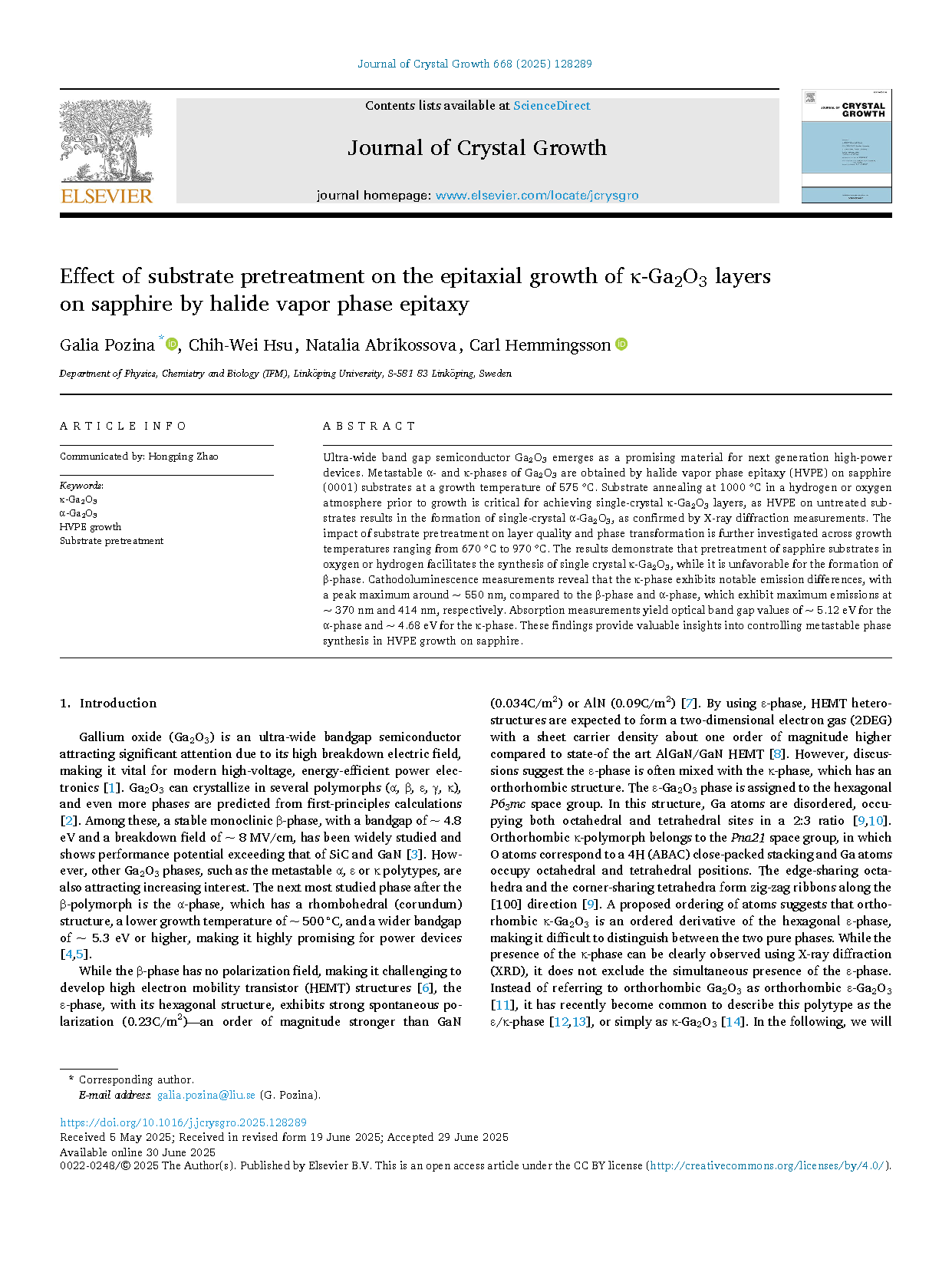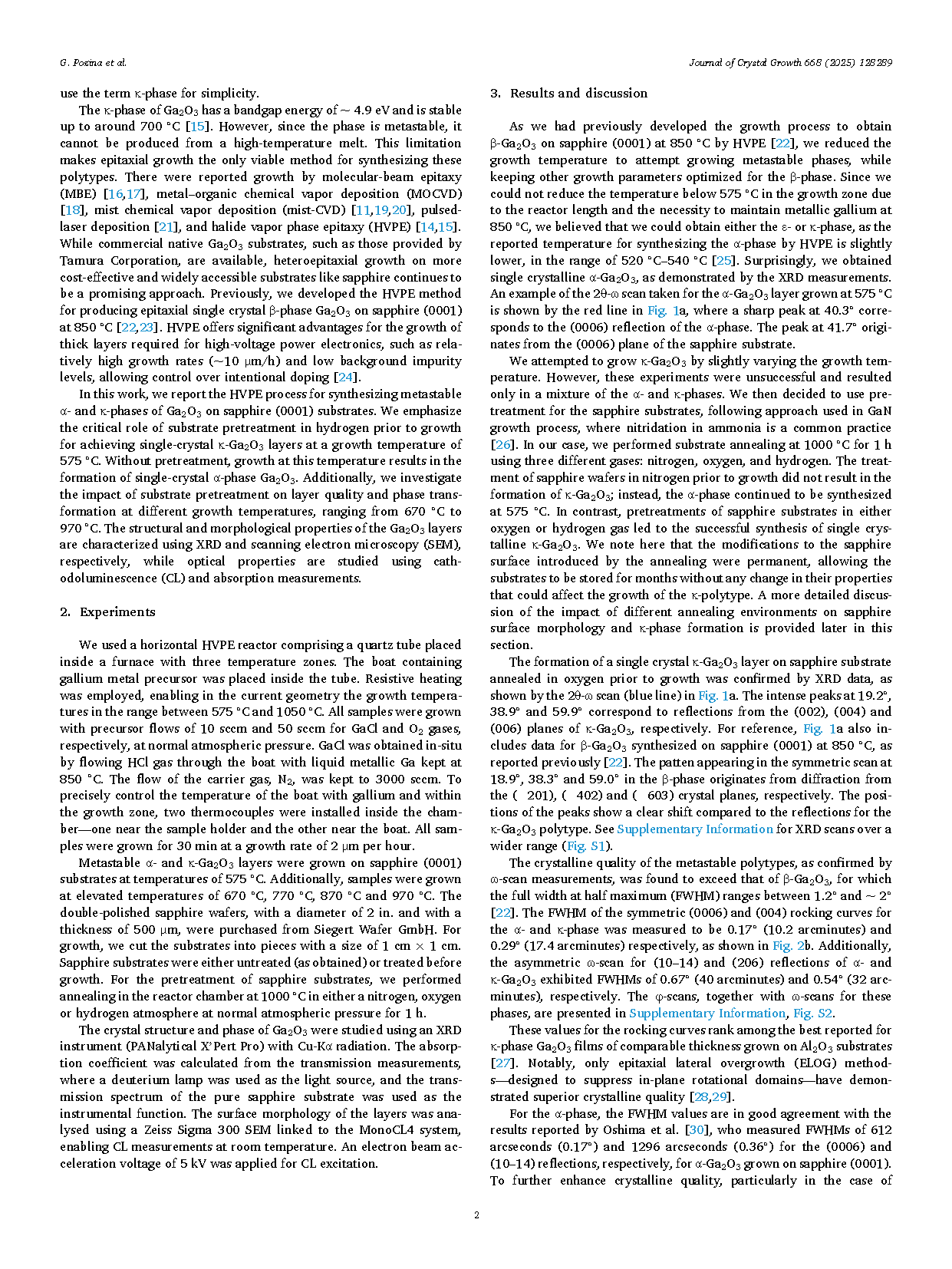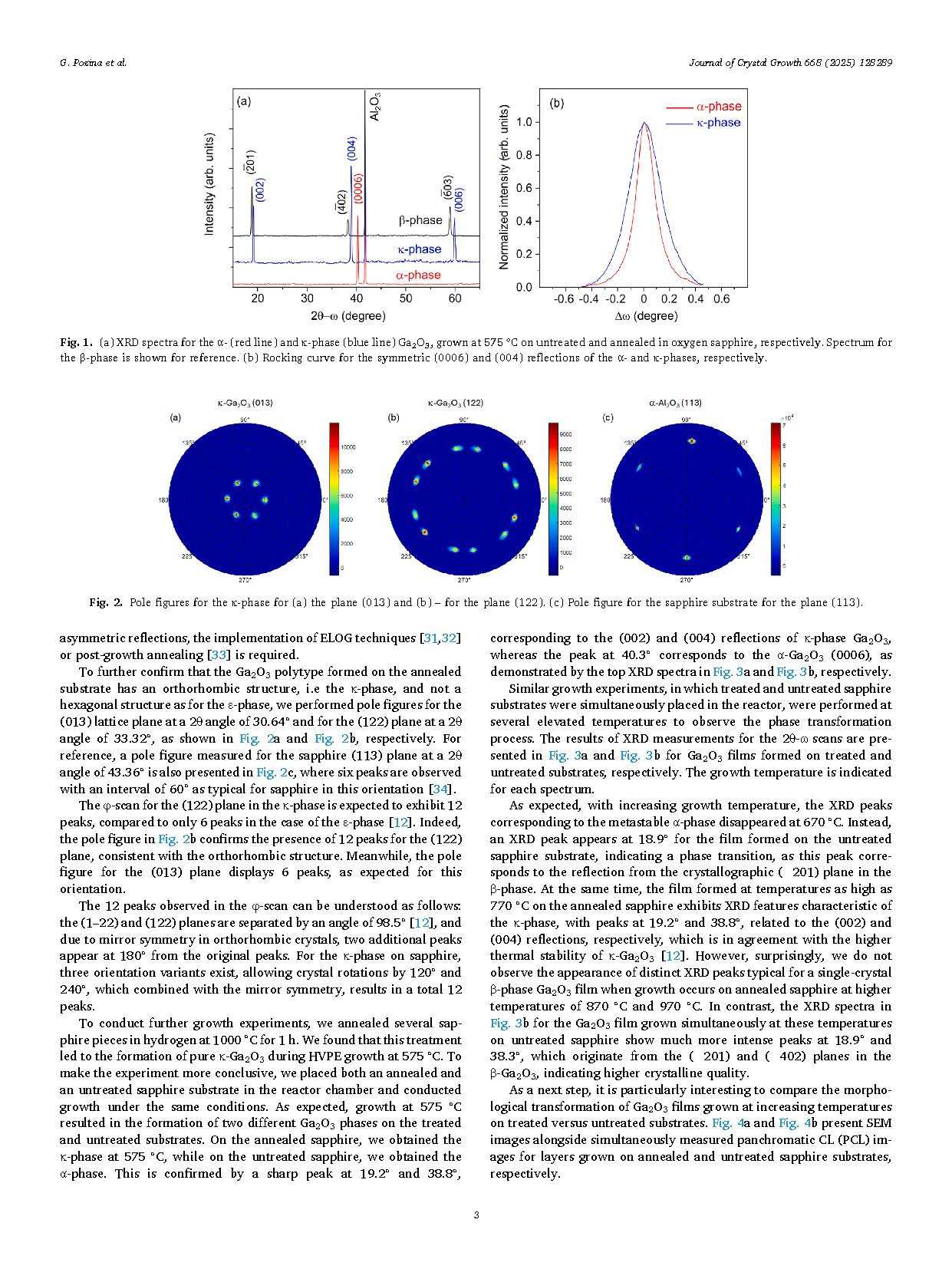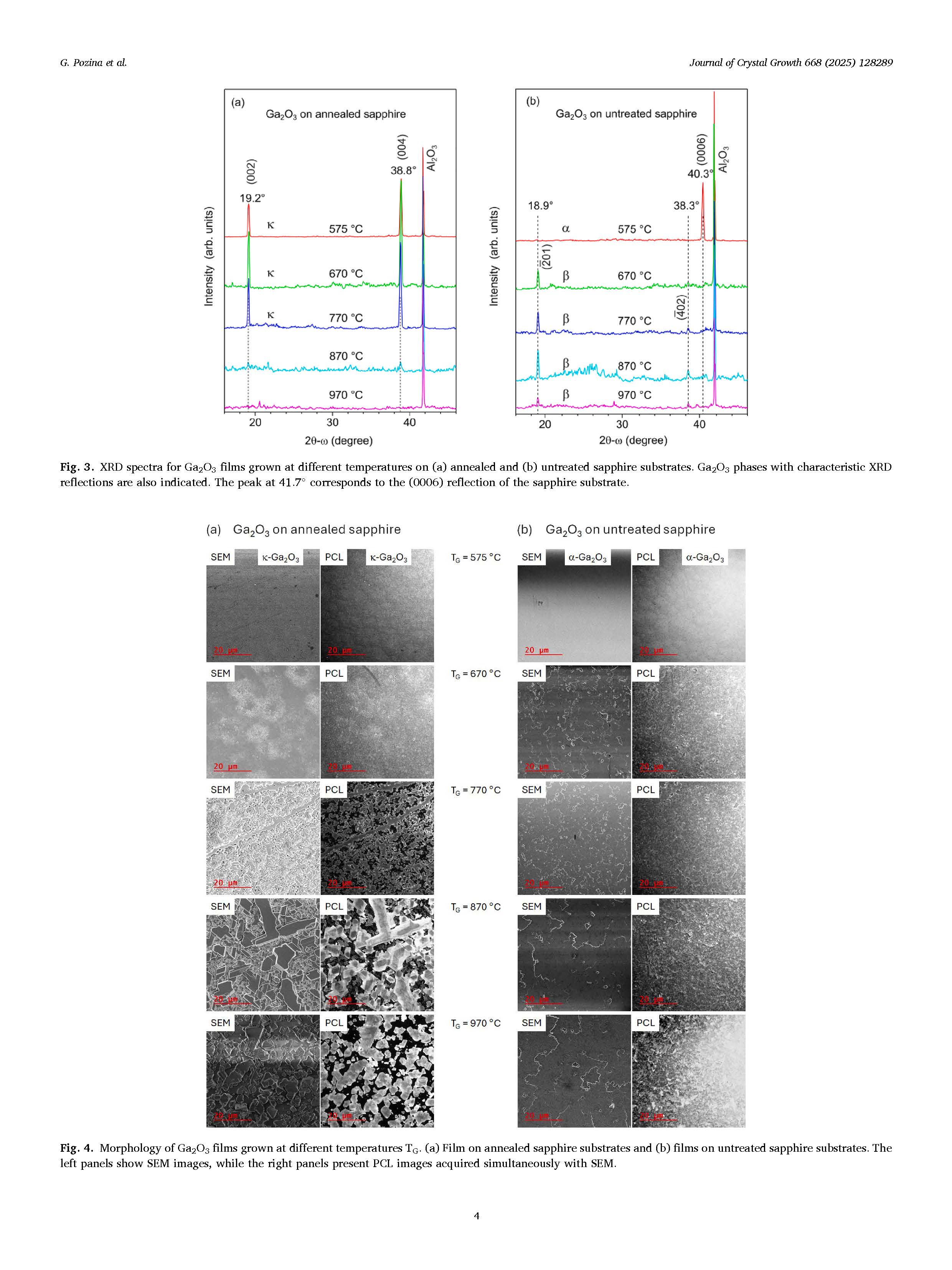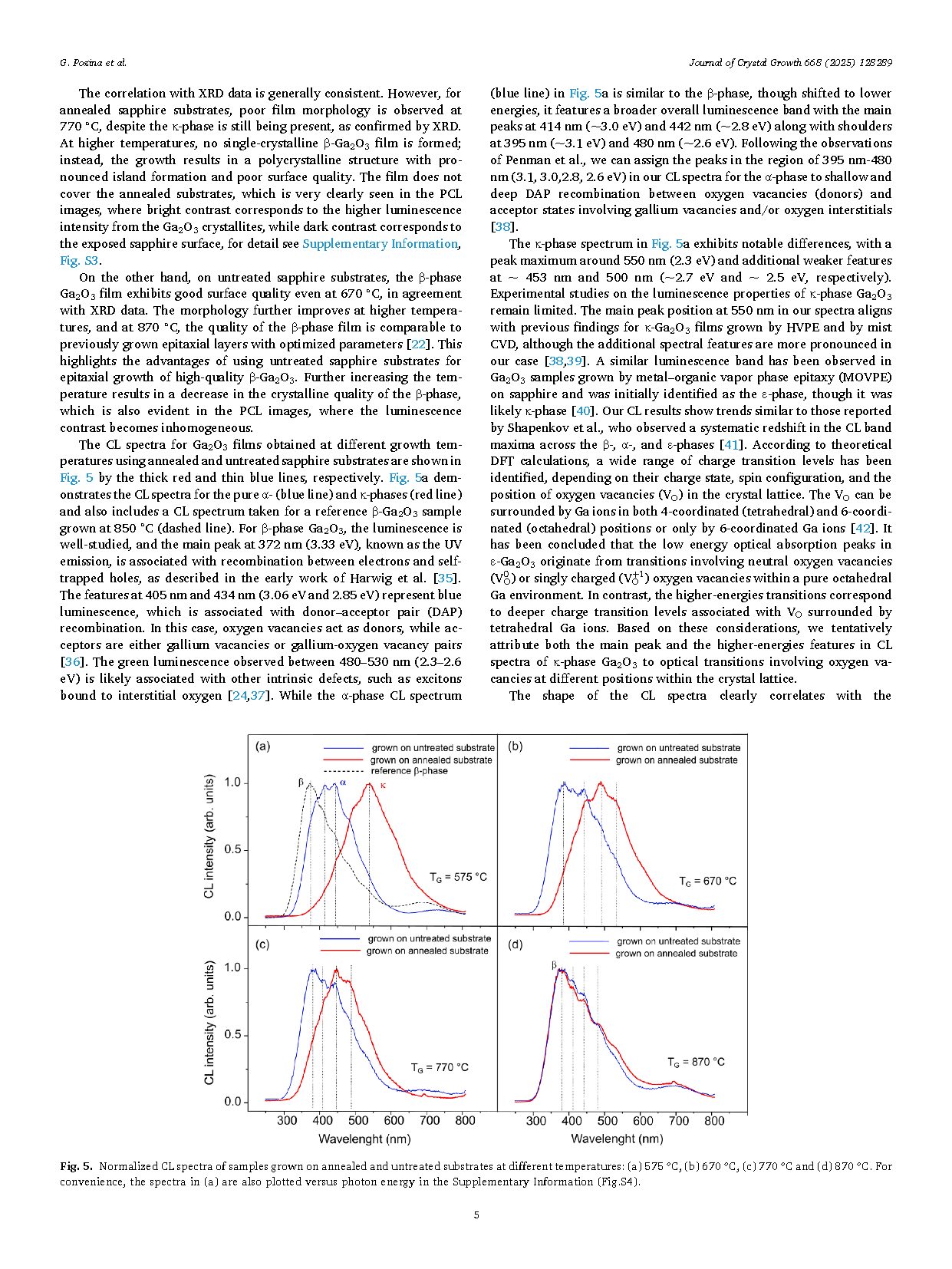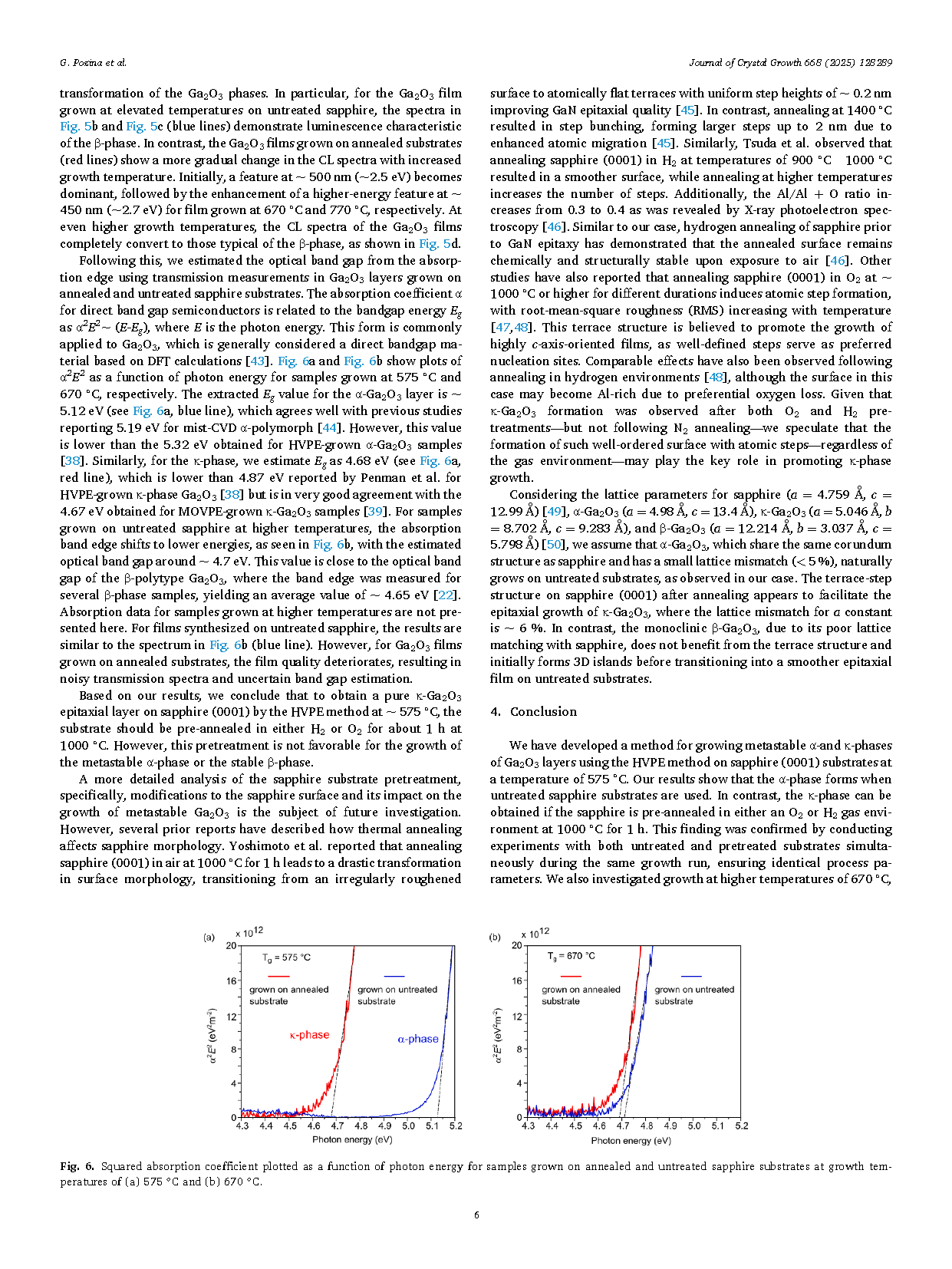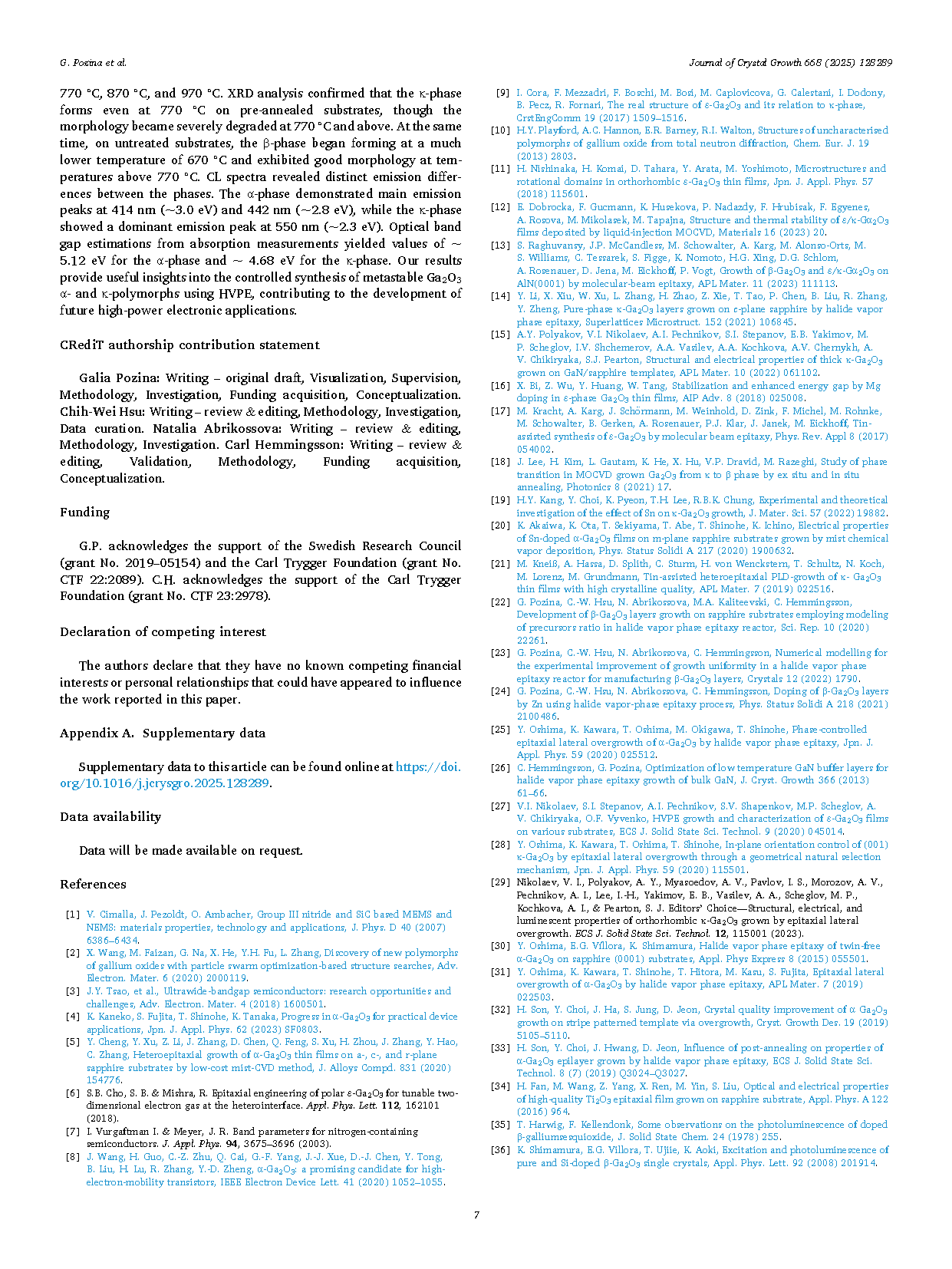
【International Papers】Effect of substrate pretreatment on the epitaxial growth of κ-Ga₂O₃ layers on sapphire by halide vapor phase epitaxy
日期:2025-08-04阅读:202
Researchers from the Linköping University have published a dissertation titled "Effect of substrate pretreatment on the epitaxial growth of κ-Ga2O3 layers on sapphire by halide vapor phase epitaxy" in Journal of Crystal Growth.
Background
Gallium oxide (Ga2O3) is an ultra-wide bandgap semiconductor attracting significant attention due to its high breakdown electric field, making it vital for modern high-voltage, energy-efficient power electronics. Ga2O3 can crystallize in several polymorphs (α, β, ε, γ, κ), and even more phases are predicted from first-principles calculations. Among these, a stable monoclinic β-phase, with a bandgap of ∼ 4.8 eV and a breakdown field of ∼ 8 MV/cm, has been widely studied and shows performance potential exceeding that of SiC and GaN. However, other Ga2O3 phases, such as the metastable α, ε or κ polytypes, are also attracting increasing interest. The next most studied phase after the β-polymorph is the α-phase, which has a rhombohedral (corundum) structure, a lower growth temperature of ∼ 500 °C, and a wider bandgap of ∼ 5.3 eV or higher, making it highly promising for power devices.
Abstract
Ultra-wide band gap semiconductor Ga2O3 emerges as a promising material for next generation high-power devices. Metastable α- and κ-phases of Ga2O3 are obtained by halide vapor phase epitaxy (HVPE) on sapphire (0001) substrates at a growth temperature of 575 °C. Substrate annealing at 1000 °C in a hydrogen or oxygen atmosphere prior to growth is critical for achieving single-crystal κ-Ga2O3 layers, as HVPE on untreated substrates results in the formation of single-crystal α-Ga2O3, as confirmed by X-ray diffraction measurements. The impact of substrate pretreatment on layer quality and phase transformation is further investigated across growth temperatures ranging from 670 °C to 970 °C. The results demonstrate that pretreatment of sapphire substrates in oxygen or hydrogen facilitates the synthesis of single crystal κ-Ga2O3, while it is unfavorable for the formation of β-phase. Cathodoluminescence measurements reveal that the κ-phase exhibits notable emission differences, with a peak maximum around ∼ 550 nm, compared to the β-phase and α-phase, which exhibit maximum emissions at ∼ 370 nm and 414 nm, respectively. Absorption measurements yield optical band gap values of ∼ 5.12 eV for the α-phase and ∼ 4.68 eV for the κ-phase. These findings provide valuable insights into controlling metastable phase synthesis in HVPE growth on sapphire.
Highlights
● Ga2O3 is a promising ultra-wide band gap semiconductor for high-power and high-voltage applications.
● Metastable α- and κ-Ga2O3 layers were grown on sapphire by HVPE at 575 °C with smooth morphology.
● Substrate pretreatment in hydrogen or oxygen at 1000 °C is critical for achieving high-quality single-crystal κ-Ga2O3.
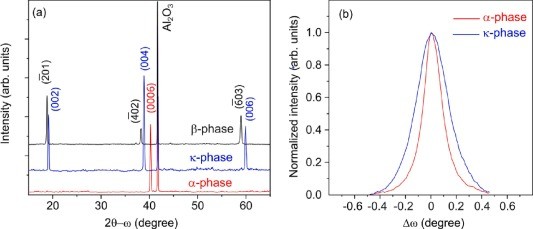
Fig. 1. (a) XRD spectra for the α- (red line) and κ-phase (blue line) Ga2O3, grown at 575 °C on untreated and annealed in oxygen sapphire, respectively. Spectrum for the β-phase is shown for reference. (b) Rocking curve for the symmetric (0006) and (004) reflections of the α- and κ-phases, respectively.

Fig. 2. Pole figures for the κ-phase for (a) the plane (013) and (b) – for the plane (122). (c) Pole figure for the sapphire substrate for the plane (113).
DOI:
doi.org/10.1016/j.jcrysgro.2025.128289
